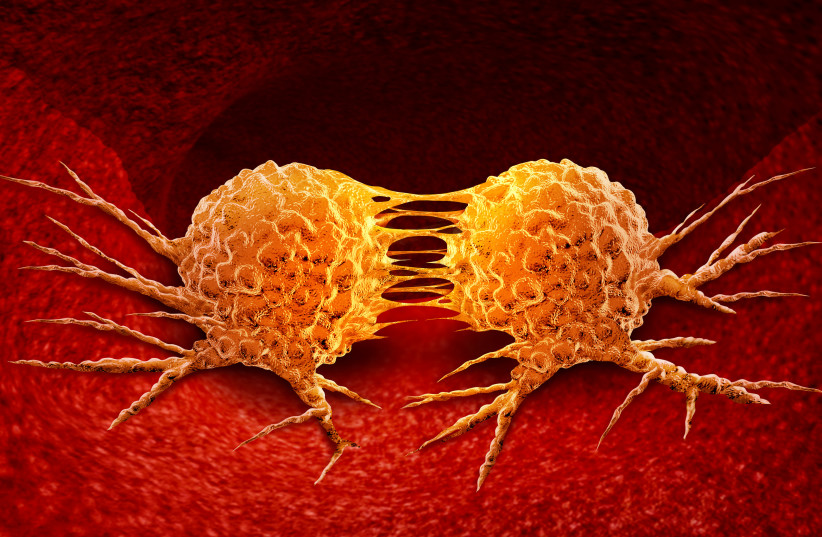In recognition of World Cancer Day on February 4, researchers at Jerusalem’s Taub Center for Social Policy Studies – Nir Kaidar, Prof. Nadav Davidovitch, and Prof. Alex Weinreb – examined morbidity and mortality rates for cancer in Israel.
Examining data between 2014 and 2018, it looked at them from three distinct perspectives – the national level, by gender and by geographic area. While the findings indicate improving trends with regard to some types of cancer, there is a distinct rise in lung cancer rates among women, the researchers said.
There are distinctions in illness and death trends between women and men due to exposure to risk factors and differences in health behaviors like smoking, nutrition and exercise, among other reasons. The researchers stressed that from the geographic- and town-level perspective, there was tremendous importance in the data analysis, since it afforded policymakers a clearer picture of these trends here.
The breakdown and analysis of cancer rates throughout Israel
Among towns with a rising rate of new cases of cancer were Kiryat Malachi and Taibeh.
They compared the latest data to previous data from 2011 to 2015 and found that, among men, the greatest increase in rates of new cases of cancer was in the towns of Kiryat Malachi, Maghar, Migdal HaEmek, Ma’alot-Tarshica, and Taibe, while the greatest declines in rates were in Tamra, Zichron Ya’akov, Hod Hasharon, Kfar Saba, and Karmiel. Among women, the five towns with the greatest increase in rates were Kiryat Malachi, Tira, Acre, Rahat, and Bat Yam, while the greatest decreases were in Beit Shemesh, Sderot, Yokne’am Illit, Ramat Gan, and Ramat Hasharon.

A comparison of the data from the two time periods indicated a general decline in the morbidity rates of cancer and a decline in the rate of new cases of cancer among both men and women for all types of cancer for which there are data. This is with the exception of lung cancer among women, where there was a slight rise in morbidity rates.
Especially low mortality rates were seen in the districts of Jerusalem, Judea/Samaria, Rehovot and Petah Tikva. National-level data indicate a decline in mortality rates among those under age 45. Between 2012 and 2016, an average of 412 men and women per 100,000 population died from cancer, and between 2015 and 2019, this number decreased to 397.
A look at mortality levels and indices of socioeconomic status reveals that cities and towns with a higher socioeconomic ranking have lower mortality rates than expected from cancer considering their rates of new cases, while in less well-off places there are higher-than-expected mortality rates, given their number of new cases.
“Morbidity and mortality from cancer are among the outstanding challenges facing healthcare systems, including that in Israel. The disparities in disease and death generally reflect the gaps between population groups, but there are also significant gaps from a geographic and town-level perspective that are worthy of further study. A better understanding of morbidity and mortality factors – of the influence of the environment, awareness, and health behaviors, as well as access to healthcare services for preventive care, early diagnosis, and treatment – affords better, more targeted interventions with the disease.”
Nadav Davidovitch
Davidovitch, head of the School of Public Health at Ben-Gurion University (BGU) of the Negev in Beersheba, commented: “Morbidity and mortality from cancer are among the outstanding challenges facing healthcare systems, including that in Israel. The disparities in disease and death generally reflect the gaps between population groups, but there are also significant gaps from a geographic and town-level perspective that are worthy of further study. A better understanding of morbidity and mortality factors – of the influence of the environment, awareness, and health behaviors, as well as access to healthcare services for preventive care, early diagnosis, and treatment – affords better, more targeted interventions with the disease.”
The Taub Center is an independent, non-partisan socioeconomic research institute, providing decisionmakers and the public with research and findings on some of the most critical issues facing Israel in the areas of education, health, welfare, labor markets and economic policy in to impact the decision-making process in Israel and to advance the well-being of all Israelis.
